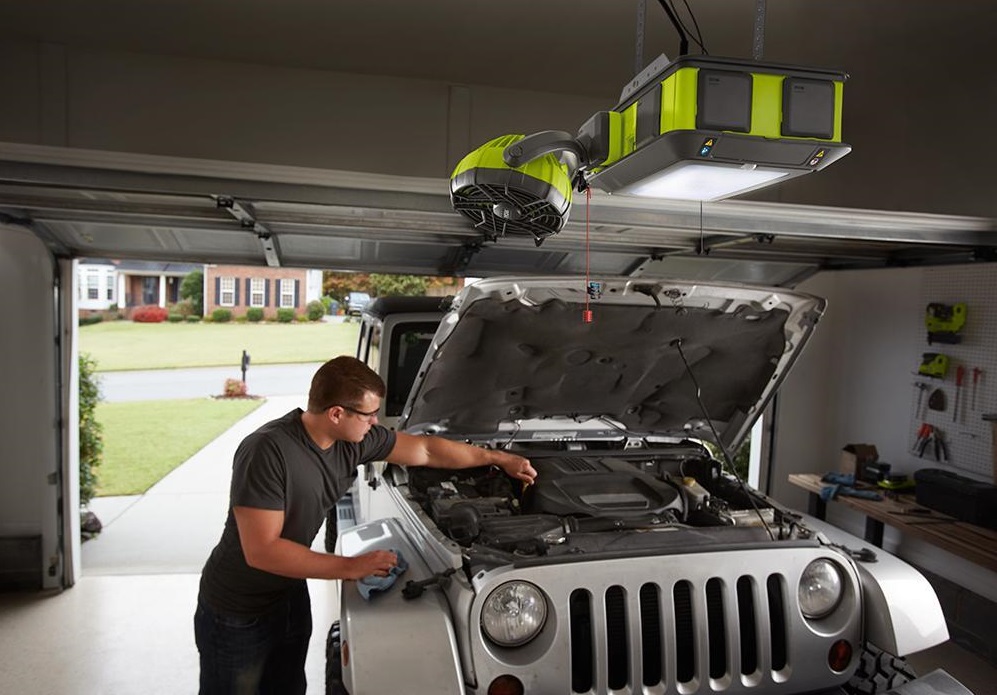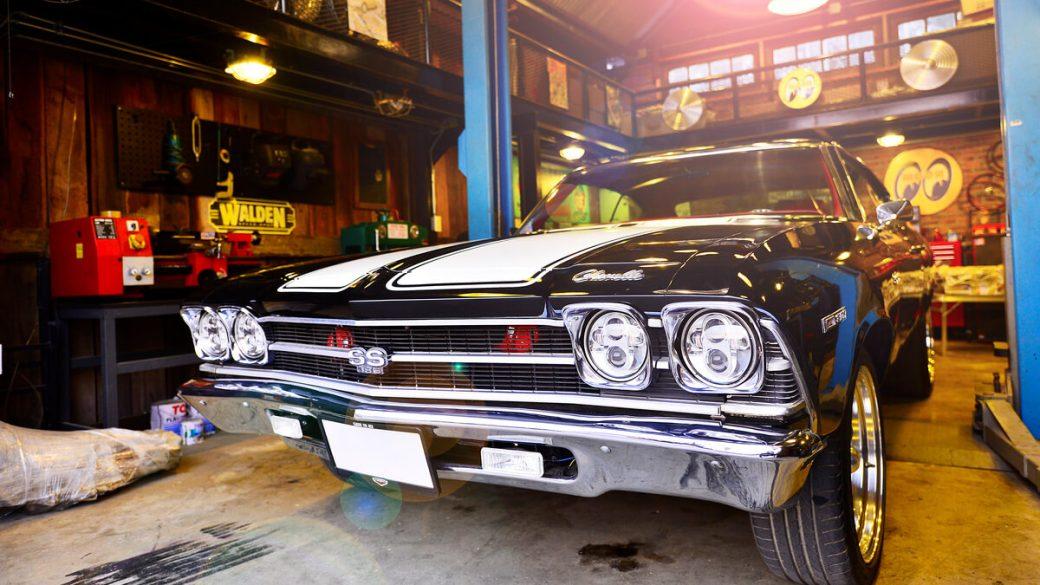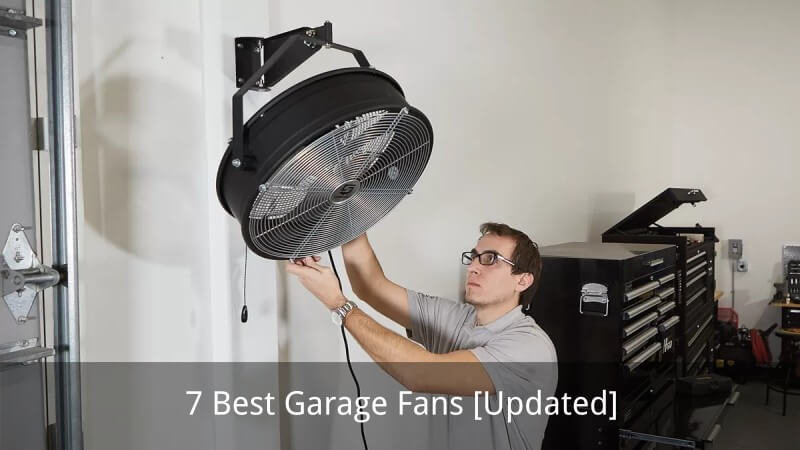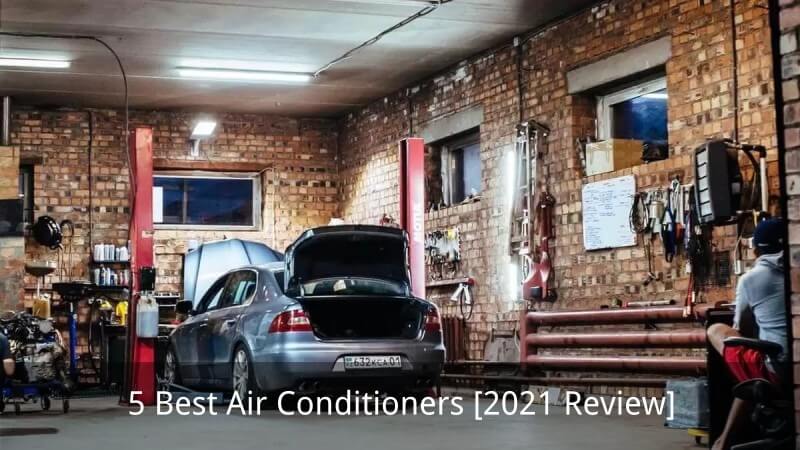There’s no denying it; keeping your garage at the right temperature is key. Nobody likes to wrench on a car when it’s a thousand degrees inside and whatever project you are working on is probably already a hassle enough not to have to fight through sweat too. Still, depending on where you live, you might have to deal with scorching hot weather for most of the year (I’m talking to you Floridians and Arizonians).
And if your garage has no window or any kind of ventilation (like most of them), it can legit feel like working inside an oven during a hot day, which is obviously the worst.
No need to mention that, yes, garages get so hot, especially in warm and humid climates, due to a lack of proper ventilation. While there’s not much to do about the weather, fortunately, there are plenty of solutions to cool your garage, ranging from simple costless habits and organizational tricks to installing a full-fledged garage-oriented air-conditioning unit.
But let’s dive into it and we’ll figure what would work best for your specific setup as we go.
Table of Contents
Why Should You Keep Your Garage Cool?
The first reason to keep your garage cool is obviously comfort. Working in a scorching hot garage just plain sucks. And adding insult to injury, the garage tends to be one of the least ventilated rooms in the house, making it quite hard to cool.
Of course, you could always pierce a new window and all but there’s usually a good reason why garages don’t have windows. For a first, bigger windows mean higher risks of theft—not saying that thieves will automatically target garages with bigger windows but you know what I mean. Also, bigger windows would let more sunshine in, which would, in turn, heat up the garage even more. The problem isn’t the same inside a house since you can install curtains but yeah curtains or blinds might not quite fit a garage. Not to forget that if you do the same kind of work in your garage as I do, things and bits tend to fly in there so window bills may add up quite fast.
In short, you want your garage to be cooler than it is and windows are not a suitable (nor affordable) solution. Here’s what could work instead!

Garage Cooling Solutions
Obviously, if you are lucky enough to already have windows, open them when possible. If not, try regularly opening the garage door in the morning and leaving it open for a little while. It’s free and it works. Some garages also have built-in ventilation units, which can certainly help with the airflow.
However, not all garages have windows or ventilation units, and not all homeowners can consider leaving the garage door open. In addition, some people might still find this measure not bringing enough cold to the space either. Under those circumstances, you need to opt for alternative solutions.
How to Cool a Garage with No Windows or Ventilation
If you don’t have a way to ventilate your garage, it’s easy to think about buying and installing a garage air conditioner and call it a day. Of course, it will work just fine—but it’s also the more expensive option. So before you go that route, it might be worth it to consider a couple more alternatives.
And luckily, there are plenty of alternative solutions available. Some are suitable for occasional use, and others are permanent solutions. Choosing between them depends on how often and for how long you work in your garage and how cold you want it to get. Not to forget that your budget will also play a significant role here.
But don’t worry; we have a little something for everyone!
Temporary Garage Cooling Solution
If you primarily use your garage as a storage facility and don’t spend much time inside, a more temporary/portable solution should be enough to make it bearable every once in a while. Here are your options.
Fans
Fans are a cheap alternative to an air conditioning system and should bring enough breeze for most people. Or in some cases, if you are welding or using torches in your garage, there’s honestly no point in turning the AC on. 1- It will never be able to bring down the temperature fast enough to overcome your acetylene torch and 2- overloading the AC might just break it altogether.
In this case, what you need is better air circulation. Just open the garage door and stick a big-ass fan inside.
With fans, you have to pick between portable pedestal models and wall/ceiling-mounted units. In this case, choosing the right model for you is really a matter of personal preference. Just keep in mind that pedestal models tend to be a bit on the smaller side to be efficient at creating decent air circulation, while wall-mounted ones are rather permanent (some can be moved from place to place but most have fixed mounting points).
What’s more important to consider is its placement. Ideally, you want it near the open door, blowing in (another fan blowing directly at you might also be a good idea). It’s always easier to draw cooler air from outside than the other way around. However, if the outside air is warmer, you’ll want to point the fan at the door, blowing out.
Need some help finding a suitable fan for your garage? Take a look at the 7 best garage fans we could find here!
Swamp Cooler
If you’ve done more research about it, you might have seen that several other websites recommend using the swamp cooler technique (which I find a bit dumb but I’ll still mention it). A swamp cooler is basically a fan on steroids but it’s also kind of a redneck solution, to be honest—still works when all else fails, though.
Put simply, whereas a regular fan can only blow air at room temperature (which is not that helpful if the room temperature is already high), a swamp cooler uses a fan and a bucket of ice to blow actual cold air. This solution takes advantage of the evaporating water pulling heat from the surrounding area and effectively cooling the air.
You can make your own swamp cooler by installing a big bucket full of ice or spraying water on the floor in front of the fan. The evaporating water will make the air cooler, especially if it points towards you.
However, swamp coolers have only limited capacities and aren’t that good at cooling down very hot garages (and you’d need a pretty huge bucket of ice to cool down a double garage or one with a car running at idle while you run some checks inside). Besides, the evaporated water will significantly increase the humidity in your garage, making you sweat even more.
Just keep this solution as a last resort.
Dehumidifiers
Without proper ventilation, or if you decide to go for the “swamp cooler” technique, your garage could have a high humidity level, which tends to trap heat and make it feel even hotter. In this case, you need a dehumidifier, especially if you live in a wet climate. It’s also a device you want to have if you’re going to keep moisture-related issues (e.g., mildew, rust, etc.) away from your stored items.
However, despite the fact that they are quite good at what they do, dehumidifiers don’t blow cold air like an AC. They will only take out humidity, which will feel better but definitely not colder. In most cases, stick a fan in front will also help a lot since they don’t blow that hard either.
Portable Air Conditioner
If you don’t use your garage that much but still want it to be cold every time you do, you might want to go with a portable air conditioner. They can be moved around, don’t take much space, and should be powerful enough to cool down a one- or two-car garage.
However, portable ACs are by far the priciest temporary solution here. And although they are totally usable in a garage with no windows or ventilation, you’ll still have to route a hose and adaptor outside. No need to mention that it becomes a challenge on its own for garages without windows. But still, most people can get away by venting it through the door or drilling a small hole in the wall to fit the hose.

Permanent Garage Cooling Solution
If you happen to have a pretty large garage or one doubling as a workshop/workspace, a permanent solution is the best solution. Here are your choices.
Garage Ventilation
If your garage doesn’t have a proper ventilation unit, it’s probably a good idea to have one installed now. Although it does require you to cut a hole in the wall/roof, properly fitted vents can help the heat escape and increase the airflow.
Wall/Door Insulation
Garages are often insufficiently insulated. And while most people understand that wall insulation does a great job trapping the heat during winter, it’s important to keep in mind that it also helps to keep the heat out during summer.
Moreover, decent insulation prevents the cold air from escaping the room when you use an air conditioner. If you plan to install an air conditioning unit, insulating your garage is a pretty good investment and will pay for itself just with what you’ll be saving on your power bill.
Looking to insulate your garage but not sure where to start? Check out the best garage door insulation kits we could find here!
Consider Lighter Exterior Color
The color of your garage’s exterior can have a significant impact on its interior temperature. Generally, darker colors absorb more heat, making the temperature rise faster. Meanwhile, lighter colors reflect the sun’s rays, making the garage cooler.
So, despite not being the most glamorous solution, consider painting the garage’s door, roof, and outside walls in a lighter color to help it cool down—it won’t make miracles but if you live in Arizona, everything helps!
Ductless Mini-Split Air Conditioner
Mini-split air conditioners are perhaps the most convenient solution to keep your garage forever cool and dry when combined with proper insulation. Most of these units can even lower the room temperature to as low as 60 °F (15 °C).
However, a mini-split air conditioner is made up of a wall-mounted indoor unit and an outdoor compressor. Thus, setting them up requires drilling holes into the wall to let the hose connecting both components pass through (which is best done by a professional). It’s also worth mentioning that an AC is the most expensive solution on this list too.
But if you are really serious about your garage game, an air conditioner is the way to go!
Looking to buy an AC for your garage? Here are the best air conditioners we’ve found!
Tips to Keep Your Garage Cool This Summer
Unfortunately, the most effective solutions cost quite a bit of money and significant elbow grease. For instance, a premium air conditioner could easily knock you back a few thousand dollars to set up. Not to mention the time you’ll spend on shopping and installing it.
So, for the thrifty souls out there who still want a lower garage temperature this summer but without shelling out the big bucks, I’ve gathered a few tips or hacks you can easily fit into a tight budget.
Choose the best time of the day to use the garage
Yes, the weather can be unbearably hot sometimes, but some parts of the day are usually not as bad. Identify the most sensible time of the day to be in your garage and complete your activities during those times. It’s usually early in the morning (up until around 10.00 to 11.00 AM) before the temperature is at its hottest.
Plan your garage activities accordingly and try to skip/delay them until the next best hour arrive. If you can’t, try to at least open the garage door and install fans early in the morning.
Take your project outdoor
If you urgently need to accomplish tasks that require you to work in the garage in the afternoon, you can try moving them outdoors. Compared to the garage temperature, the outdoor temperature should be more pleasant to work with.
Don’t want to work in the sun? Try installing a 10’x10′ canopy right beside your garage. Once properly attached to the ground, these things can even be used when it’s raining and they are pretty inexpensive too—check this one here!
Cool your recently used vehicle before parking it inside
Engines get really hot, obviously. So of course, leaving your engine cool down before parking your car in your garage is a no-brainer. Try parking your car outside in the shade or wait for a little after sunset before moving it into the garage. That should give it some time to cool down.
Once again, it’s not the perfect solution, but it sure helps—especially if your AC is already fighting for its life.
De-clutter your garage
If you’re like me, your garage might be overloaded with tools and disassembled (totally still good) parts, contributing to that cramped vibe. Moreover, stacked boxes and bulky items could prevent proper airflow in the garage. Not to forget that they tend to collect dust and harm the air quality inside as well.
Thus, consider storing most of your scarcely used stuff using overhead ceiling racks. Or, if that’s not an option, try installing pegboards or wall cabinets to create de-clutter your garage as much as possible—with the added benefit of finally organizing your tools for once (I promise I’ll do it too).
Last Words
While working in a hot garage sure is an unpleasant experience, modern times have given us plenty of solutions to get around this problem. Indeed, everyone has their own standard for a cold garage, and many could probably settle with just opening the door and turning on the fan—not to mention that not everyone lives down south. In some cases, using a couple of these hacks should be more than enough. Still, if you really want an icy-cold garage, install some insulation and get your hands on a proper garage air conditioning unit—you’ll thank me later.









